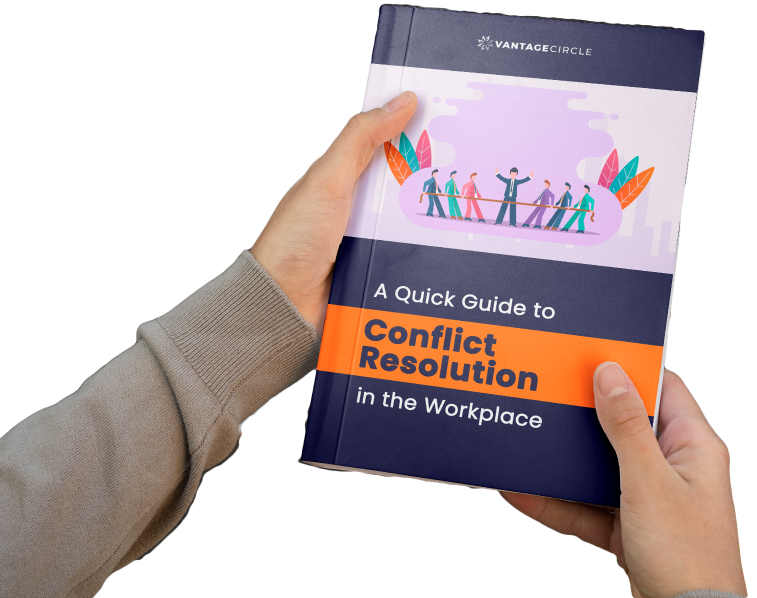One on One Meeting Questions For Managers
Imagine walking into work daily knowing your voice matters, your ideas are valued, and your growth is a priority. That’s the power of a well-executed one-on-one meeting. Across industries, organizations are realizing that a thriving workforce isn’t just about deadlines and numbers. It is about meaningful conversations. A one-on-one meeting is a simple way to boost engagement. It can also help improve performance and build leadership skills. Studies show that companies that have weekly one-on-ones see three times higher employee engagement. This leads to better productivity and job satisfaction.
But beyond numbers and performance metrics, these meetings tap into something deeper, the human side of work. A quick check in with a manager can ease workplace stress, reignite motivation, and create a sense of belonging. Employees who feel genuinely heard and supported are 2.8 times more likely to stay committed to their roles. Many managers miss this chance. They focus only on tasks and results, not on the person doing the work.
The key to a great one-on-one is not just showing up. It is about asking the right questions. You should also encourage open conversations. Create a space where employees feel valued. When done well, these meetings are more than just calendar invites. They help create a happier, more engaged, and high-performing workforce.
Related article: The Shift Toward Personalized Connections: Why One-on-One Meetings Matter
Key Categories of One-on-One Questions
To get the most from one-on-one meetings, ask questions about different parts of an employee’s experience, such as:
Well-being: Understanding how employees feel about their workload, stress levels, and overall job satisfaction.
Performance: Identifying challenges, achievements, and areas where support is needed.
Career Growth: Discussing future aspirations, skills development, and long-term career goals.
Feedback: Encouraging employees to share their thoughts on management, team dynamics, and workplace culture.
Personal Development: Exploring opportunities for learning, mentorship, and personal interests beyond work.
Additionally, non-work-related questions play a crucial role in fostering deeper connections and workplace loyalty. When managers care about employees' hobbies, goals, and well-being, it builds trust and engagement. This makes employees feel valued for more than just their work.
30 Essential One-on-One Meeting Questions
Well-being & Personal Check-ins
"Feeling listened to and understood is a fundamental human need. When people feel heard, they are more likely to trust, engage, and collaborate productively." — Carl Rogers, Psychologist
One-on-one meetings aren’t just about work. They are about people. Asking about an employee’s well-being fosters trust and shows emotional intelligence.
When employees feel that their thoughts and emotions are acknowledged, they become more engaged and open. Behavioral psychology shows that casual but organized talks create a safe space. This allows people to share their thoughts without fear of judgment. As a result, discussions become more honest and meaningful.
A thoughtful check-in can help managers identify stressors early, offer support, and strengthen relationships. These moments of connection create a more engaged workforce. They also help build a culture where employees feel safe, valued, and motivated to do their best work.
Let’s look at a few examples of thoughtful and sincere personal check-in questions.
- How has your week been, both at work and outside of it?
- Is there anything on your mind that you’d like to talk about or get support with?
- What’s something that has brought you joy or excitement recently?
- Do you feel like you have a good balance between work and personal life right now?
- How can I support you better in your role or overall well-being?
Alignment & Company Connection
Employees need to feel aligned with company goals to stay motivated. When they understand how their work contributes to the bigger picture, they are more engaged and committed. However, disengagement often stems from misalignment, which managers can identify through one on one conversations.
Cognitive bias theory says that when employees feel disconnected from a company’s vision, they show signs of disengagement. These signs can include hesitation, vague answers, or a lack of enthusiasm. Managers who listen for these signals can address concerns early. This helps restore a sense of purpose and belonging.
A study by Deloitte found that 73% of employees who feel connected to their company’s purpose are very engaged. In contrast, only 23% of those who do not feel this way are engaged. This highlights how critical alignment is in driving motivation and long-term commitment (Deloitte, 2021 Global Human Capital Trends).
Here are a few company pulse score questions to gauge the alignment and the connection of the employees to the company.
To gauge alignment, managers can ask employees to rate their connection to the company on a scale of 1 to 10:
- How well do you understand how your work contributes to the company’s success?
- On a scale of 1 to 10, how connected do you feel to the company’s mission and values?
- Do you see a clear path for your career growth within the company?
- How often do you feel excited about the work you are doing?
- What’s one thing the company could do to help you feel more engaged?
By tracking responses over time, managers can see trends and fix alignment gaps. This helps keep employees motivated and invested in the company’s success.
Performance & Productivity
Understanding what drives an employee’s performance is key to setting goals and maintaining accountability. A strong performance conversation is not just about looking at past results. It helps employees assess themselves, see their strengths, and find areas to improve.
Self-assessment plays a powerful role in this process. When employees reflect on their own performance, they gain deeper insights into their work habits and challenges. Managers can guide these reflections with thoughtful questions that encourage employees to take ownership of their growth.
Encouraging self-evaluation fosters a culture of continuous improvement. Instead of simply giving feedback, managers should create a dialogue that helps employees see their potential and work towards it. A well-structured one on one focused on performance not only improves individual productivity but also strengthens the team’s effectiveness.
To help employees reflect on their performance and productivity, managers can ask:
- What recent accomplishment are you most proud of, and what made it successful?
- What obstacles are currently slowing you down, and how can I help remove them?
- Do you feel you have the right tools and resources to be productive? Why or why not?
- If you could improve one aspect of your workflow, what would it be?
- How do you prefer to receive feedback to stay motivated and improve your performance?
Career Development & Growth
Psychologist Edwin Locke’s Goal-Setting Theory suggests that people are more motivated when they have clear, challenging goals and regular feedback. Without direction, employees may feel stagnant, leading to disengagement and turnover.
Employees stay engaged when they see a clear path for growth. They want to know that their efforts are leading somewhere meaningful. Career conversations shouldn’t be a once-a-year discussion; they should be ongoing, shaping an employee’s journey within the company.
A report by LinkedIn’s Workplace Learning Report found that 94% of employees would stay at a company longer if it invested in their career development (LinkedIn, 2019).
A manager's job is to help employees find their goals. They also help close skill gaps and make plans for growth.
Career growth isn’t just about promotions—it’s about continuous learning, new challenges, and feeling valued. Thoughtful conversations can help employees shape their path forward and stay engaged in their journey.
- What skills or experiences would you like to develop in the next year?
- Do you feel you have enough opportunities for career advancement here? Why or why not?
- What aspects of your current role do you find most fulfilling, and what would you like to do more of?
- Where do you see yourself in the next few years, and how can we help you get there?
- What kind of support or mentorship would help you grow in your career?
Team Dynamics & Collaboration
The Dunbar Number Theory says that people can only keep stable relationships with about 150 people at once. Even fewer can form strong, close bonds. In a workplace, this means managers must be intentional about fostering meaningful connections. Regular one-on-ones give employees a chance to share concerns and solve conflicts. This helps build team unity and boosts morale and productivity.
Strong relationships are the foundation of a high-performing team. When employees feel connected, they collaborate more effectively, trust their teammates, and contribute to a positive work culture. But maintaining these connections requires effort—especially in larger teams or remote work environments.
Strong teams thrive on trust and communication. To understand how employees feel about their team dynamics and collaboration, managers can ask thoughtful questions like these:
- How comfortable do you feel communicating openly with your team?
- Are there any collaboration challenges you’ve faced recently?
- Who on the team do you work best with, and why?
- Do you feel your contributions are valued by the team?
- What’s one thing we could do to improve teamwork?
Upward Feedback & Manager Improvement
Great managers don’t just lead—they listen. Encouraging employees to share honest feedback fosters trust, strengthens leadership, and creates a culture of continuous improvement.
"Leadership begins with humility. The best leaders admit mistakes, seek feedback, and grow alongside their teams." — Patrick Lencioni
Vulnerability-based leadership shows that acknowledging faults doesn’t weaken authority—it builds trust. When managers invite feedback and act on it, employees feel heard, respected, and more engaged.
Upward Feedback Questions
- What’s one thing I could do differently to support you better?
- Do you feel comfortable sharing concerns or ideas with me? Why or why not?
- What’s something I do well as a manager that you’d like me to continue?
- Have there been any decisions I’ve made that you didn’t fully understand?
- What’s one change I could make that would improve our team’s dynamic?
How to Structure a Productive One-on-One Meeting
The best one-on-one meetings are structured yet flexible, allowing for open-ended discussion and goal alignment. One effective approach is the 10-10-10 model:
- 10 minutes for employee updates – Let them share progress, concerns, and wins.
- 10 minutes for manager feedback – Offer guidance, recognition, and support.
- 10 minutes for future planning – Discuss career goals, next steps, and new opportunities.
This simple framework keeps meetings focused while ensuring a meaningful exchange between managers and employees.
Transforming One-on-Ones into a Leadership Superpower
When done right, one-on-one meetings become a leadership advantage, driving engagement, retention, and performance. These talks are not just about work. They focus on building trust, understanding what employees need, and creating a culture where everyone feels valued.
The long-term return on investment is undeniable. Consistent, meaningful one-on-ones lead to higher employee satisfaction, stronger teams, and ultimately, better business outcomes. Great leaders don’t just manage; they listen, support, and empower their people.

















